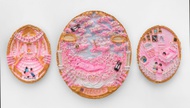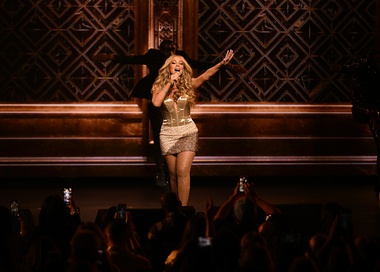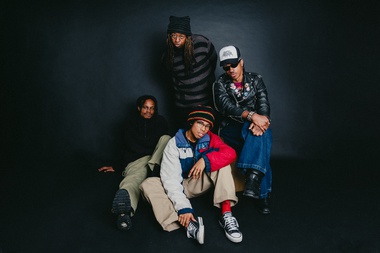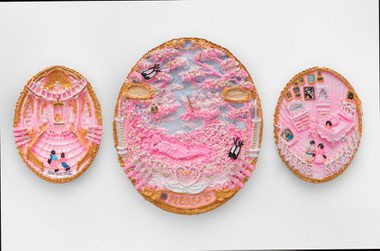My native-born Las Vegas friends fear that we’re losing it. I see their anger spiking in Facebook conversations and unfurling across Twitter threads. They inveigh against the new high-occupancy lanes on Interstate 15; against the paid parking at casinos; against the way our professional sports franchises are pushing UNLV’s legacy basketball team off the front page.
“This isn’t the Vegas I grew up with,” one said, bitterly. “I don’t even recognize this city anymore.”
I understand their frustration, but I don’t feel it as deeply as they do, partially because I’m not a Vegas native. This is the second leg of what I call my extended Vegas residency; I moved here from Orange County in 1990 and spent 12 years watching the modern Strip shoot out of the ground. Then I relocated to Seattle and stayed there 10 years, returning to the Valley in 2012. That’s partly why a changing Vegas doesn’t faze me: I’ve long been accustomed to carpool lanes and bad traffic from my time in SoCal, and a decade in Seattle inured me to paid parking and endless pro sports talk. I’m able to see Las Vegas’ growing pangs for what they are: critical mass.
To be honest, though, I’m beginning to feel it, too. When I moved here, the population of Clark County was just over 750,000; today, it’s 2.2 million. I won’t bore you with all that “this sure was a different town back than” stuff, but man, it really was. The drive up Charleston to Red Rock Canyon had at least 20 minutes of open desert in it. And when you went out at night—to the Greek Festival or to the old Hard Rock Hotel—you inevitably saw people you knew. Simply put, back then there weren’t as many of us living here, and not as many places to go. Today, you can lose yourself in bigger crowds, find more obscure places to hang out—great news if you’re working your way through this town’s dating pool, less so if you need someone to watch your pets while you’re away.
Close-knit communities have always been among Las Vegas’ best traits. Once I made the choice to get involved with this city—its local music, gallery openings, coffeehouses and the like—Las Vegas closed ranks around me, and I made friends I still have to this day. Vegas has always liked buy-in, and I have to believe that if we continue to put something of ourselves into it, the city will pay us back. So, perhaps in addition to attending those galleries and festivals and local shows, we could give these ideas some consideration:
Embracing the identity of our neighborhoods. I remember, years ago, being ecstatic to learn that the Valley wasn’t just one vast, monolithic exurb; that within unincorporated Clark County there were towns (Paradise, Winchester, Sunrise Manor and others), and that within those towns were neighborhoods (Westleigh, the Lakes, Paradise Palms and others). One of the best parts of living in Seattle was having the gift of a home neighborhood; to be able to tell friends, “I’m in south Ballard,” instead of, “If you pass three 7-Elevens, you’ve gone too far.”
Let’s make this Valley more familiar by learning the names of our neighborhoods (or by naming them if they’re nameless). Then let’s learn the names of our neighbors, find out what their deal is. From those humble beginnings come safer streets, more area activities and a warm feeling of belonging, like you’ve got a home team.
Carpool. Until Las Vegas commits to a rapid-transit solution—and probably after that, too—our traffic problems will only get more severe. (If you think widening roads or eliminating carpool lanes solves the problem, Google “induced demand” and read a few sobering studies.) If you’re using a freeway to get to work, ask around your workplace to find out if a carpool might be possible. You’ll save gas, get in some good conversation and—best of all—be able to use the snazzy new carpool lanes on I-15. The high-speed flyover from the northbound 15 to the 95 is so smooth and fast it feels like you’re getting away with something.
Recognize that the bones of our city are still there. Last month, the Las Vegas Convention and Visitors Authority introduced the #onlyvegas hashtag. So what is it, really, that’s Only Vegas? It’s not legalized gambling; there are apps for that. Our marquee restaurants are dynamite, but many of them are imported—and we have no regional cuisine. We don’t even own the idea of Vegas; it’s a narrative we locals have had little hand in creating (see also: Jay Sarno, Hunter S. Thompson, Ocean’s 11).
The only thing that’s really, truly “Only Here” is us—the 2.2 million people who have chosen to live in this desert. We make this city what it is by being here; it’s not some alien entity that’s beyond our control. So let’s be here, as much as we can, and see what we can do with the place.








